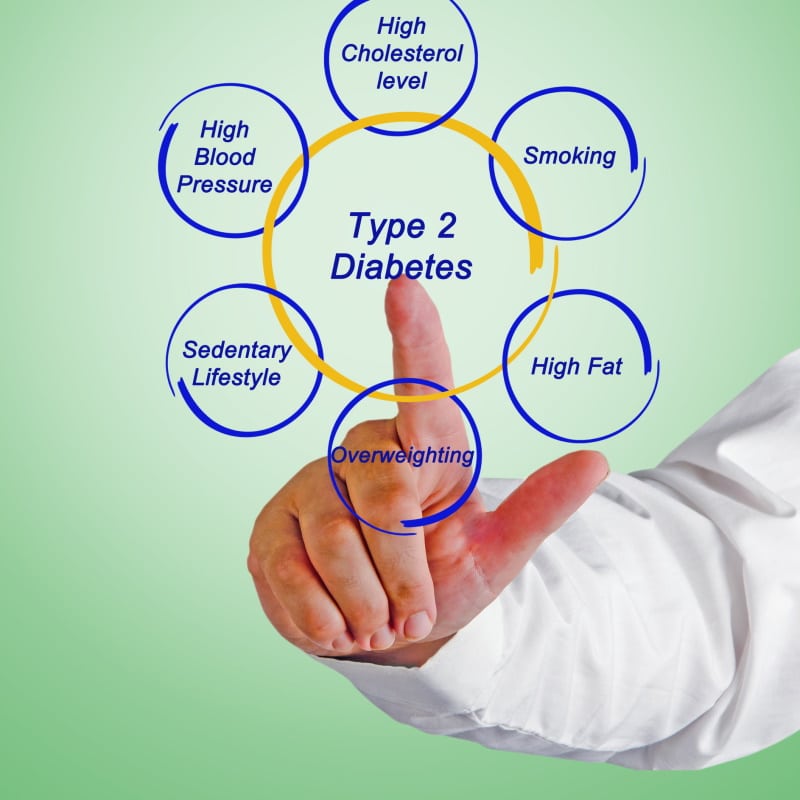What Is Type 2 Diabetes

By Susan
September 9, 2021
Type 2 Diabetes or “the sugar” not only affects your pancreas but other significant organs in your body. The older population used to be deemed the only at-risk people for developing Type 2 Diabetes. Now, younger children are less active, gaining weight, and being diagnosed with Type 2 Diabetes. I will be discussing risk factors, symptoms, complications, treatment, and prevention associated with Type 2 Diabetes.
Type 2 Diabetes is when your pancreas cannot produce enough insulin to keep up with the amount of glucose (sugar) in your body. Glucose is the fuel your body uses to keep you going every day. When your pancreas fails to keep up with the amount of sugar in your bloodstream, this can lead to problems with your circulatory, immune and nervous systems.
Let’s take a look at the risk factors for Type 2 Diabetes:
- Age: if you are over 45, this puts you at greater risk
- Areas of darkened skin: typically, you will find these in your armpits or on your neck
- Being inactive and overweight: leading a sedentary lifestyle (couch potato)
- Distribution of your body fat: excess fat around your middle, your tummy, adds to your risk
- Ethnicity and race: although the reason is unknown, those who identify as Asian, Black, Hispanic, Native American, and Pacific Islanders are at higher risk of developing Type 2 Diabetes
- High cholesterol: if your triglycerides are 150 mg/dl or greater
- Family history: if your parents or your siblings have Type 2 Diabetes, this increases the risk for you
- Prediabetes: If you continue to ingest large quantities of sugars or foods that metabolize into sugar, you are at greater risk of receiving the diagnosis of Type 2 Diabetes
- Pregnancy-induced diabetes: if you gave birth to a baby weighing more than 9 pounds or diagnosed as having gestational diabetes
- Polycystic Ovary Syndrome: if you have excessive hair growth, irregular menstrual cycles, increased weight
How will I feel if I have Type 2 Diabetes?
You do not need to have ALL of these symptoms to be diagnosed with Type 2 Diabetes. But typically, a combination of symptoms will lead your physician to explore more behind the “why” you feel the way you do.
- Blurry Vision
- Cannot quench your thirst
- Cuts or bruises that are slow to heal
- Extreme fatigue or tiredness
- Never feeling full even after you have just eaten
- Numbness, pain, or tingling feeling to your fingers and toes
- Urinating more than you have been
Potential Complications of Type 2 Diabetes
According to the Mayo Clinic, “Type 2 Diabetes affects many major organs, including your heart, blood vessels, nerves, eyes, and kidneys. Also, factors that increase the risk of diabetes are risk factors for other serious chronic diseases, such as:”
- Dementia: Studies have shown Alzheimer’s disease and other forms of dementia with a link to diabetes
- Eye damage: this may include cataracts, glaucoma and could even lead to blindness
- Heart and blood vessel diseases: this may include high blood pressure, narrowing of blood vessels, and stroke
- Kidney disease: the damage could become irreversible and lead to chronic kidney disease and even the need for dialysis.
- Nerve damage: the feeling of pain/tingling sensation can start at your toes or fingertips and gradually work its way upward
- Other nerves: those are leading to the heart can cause irregular heart rhythms; the nerves to the stomach and downward can cause constipation, diarrhea, nausea, and vomiting. For men, it can cause erectile dysfunction.
- Skin conditions: excessive sugar in our bodies can result in skin infections that are bacterial or fungal in origin.
Treatments for Type 2 Diabetes
With all the potential complications from Type 2 Diabetes, the list is compact for treatments.
- Blood sugar monitoring: you can stay on track and be aware of how your body is reacting to what you may or may not be eating
- Healthy eating: Fruits, veggies, low-fat meats, plenty of water
- Potentially, you may need oral medication or insulin therapy
- Regular exercise so that you can maintain a healthy weight
Prevention of Type 2 Diabetes is up to you.
Four tasks you can do for you and your health include:
- An active lifestyle. Walking, biking, low impact aerobics, yoga, running; you are getting the idea. So put the TV remote down or your electronic device and stand up for your health.
- Bring on healthy fruits and veggies. When you are grocery shopping, stay to the perimeter of the store. The edge of the store is where you will find your fresh fruits, veggies, fresh fish, and healthy meats
- Connect with a friend or family member to have a “buddy” for check in’s, cook for the week together, exercise together, keep each other on track
- Losing weight: follow the pointers above to be well on your way to a healthier and lighter you.
If you fall off the proverbial wagon, climb back on and start again. No one is expecting you to be perfect, and neither should you.
